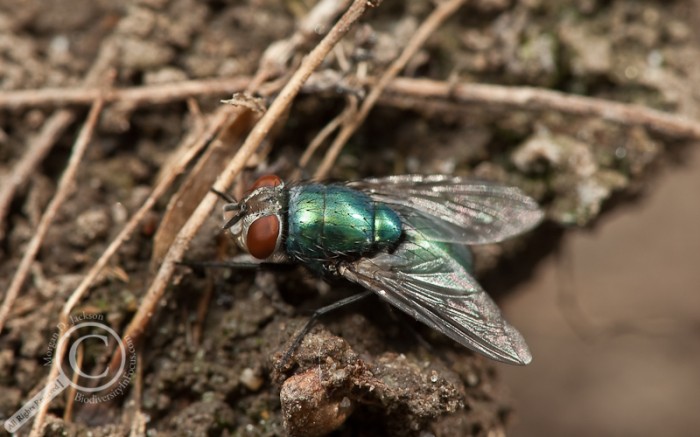The Canadian Journal of Arthropod Identification has just published it’s 11th edition and features the blow flies (Calliphoridae) of eastern Canada. This new paper includes richly illustrated keys to the adults of all genera found in eastern North America and the species found in eastern Canada (excluding the cluster flies (Polleniinae), and the rare, mollusk-parasitizing Melanomyinae). Additionally, two species are newly recorded in Canada (or eastern Canada), and Stephen Marshall has populated the paper with his world-class photographs.
The Calliphoridae are important for a number of reasons, and unlike many insects, correct identifications can quite literally be a life or death choice. These flies are a keystone in forensic entomology, and knowing which species colonize a victim’s body, and when, can mean the difference between catching a killer and convicting the wrong person. The importance of Ontario Calliphoridae is perfectly illustrated in the case of Steven Truscott. Sentenced to death by hanging at the age of 14 for the murder of Lynne Harper in rural Ontario, Truscott’s sentence was commuted to life in prison in 1959. Truscott served his 25 year sentence behind bars, and lived with the stigma of a being a convicted murderer for nearly 50 years. It wasn’t until an appeal before the Ontario Court of Appeal in 2006 that entomological evidence collected at the time of the murder was analysed and presented by Dr. Sherah VanLaerhoven of the University of Windsor. This entomological evidence, largely composed of blow fly maggots, helped to overturn Truscott’s conviction, and led to his acquittal. Sure, forensic entomology wasn’t even on the radar in 1959 (although the coroner at the time had the presence of mind to collect and catalog maggots from on and around the body), but forensic entomologists today are called to hundreds of crime scenes every year to help develop a timeline of events to be used in criminal prosecution.
The majority of people using this paper will not be making these life or death decisions, but being able to identify the species you find on your backyard flowers (because blow flies are also major pollinators) is equally important. Plus, if you choose to play CSI on that dead squirrel under the deck, now you can!


I was definitely impressed to know that a coroner in the 50s not only thought about the insects present at the crime scene, but he also had the wherewithal to collect and preserve samples that ultimately served decades later to overturn a wrongful conviction.
This is great! Just wondering if the paper is amateur-friendly for identifications?
I’d say the key is very amateur-friendly. The authors have provided plenty of high resolution photos in which they have labeled all the structures discussed in the keys. Some of the characters are thoracic bristles or basal wing structures, so a hand lens or high magnification photograph may be needed for some species identifications, but most common species should be identifiable by eye or habitus photo.